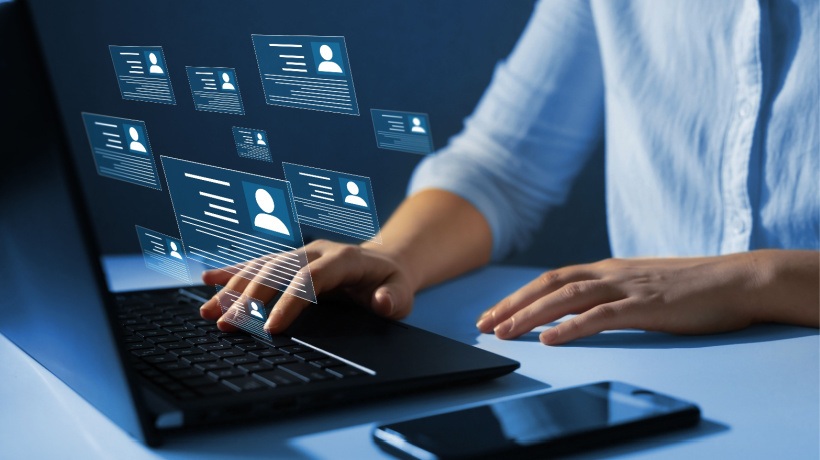Distinguish Between Digital And Technology-Enabled Learning
We’ve used electronic technologies in L&D since the days of the overhead projector (see picture above) when we took pride in creating beautiful and alluring acetates to compliment our classroom training.
Since then, PowerPoint and projectors, videos, eLearning, Learning Management Systems and all sorts of other new and novel products have proliferated our profession.
But, despite this, and as described by Digital Consultant Myles Runham:
“…the industry has changed so little despite the use of so much technology and so much use of the word Digital. My hypothesis (for today at least) is that technology has become a place to hide for L&D in a digital world.”
My own hypothesis, in addition to Myles’, is that we’re now confusing ‘Digital’ with ‘Technology-Enabled Learning’ (TEL) and, without understanding the differences, we will not experience – and initiate – the incredible opportunities offered with ‘Digital’.
Technology-Enabled Learning (TEL), tools such as overhead projectors, eLearning, Learning Management Systems, webinars, etc, make L&D’s job easier, usually in the scaling and administration of L&D programmes. These products allow L&D to give their customers what they want their customers to have.
Digital, on the other hand, helps the end-user (L&D’s customer) to do something they want to do (in relation to their work and careers) better than they could have done without. Digital experiences in our everyday life help us to instantly communicate and engage with friends, family, peers, experts, celebrities, etc.; to shop whenever and wherever we want to; to navigate our way to virtually any destination on-the-fly; book travel and places to stay; and find music, videos, books and any other media we choose, whenever we wish to. Digital brings convenience, connections, access to information and know-how to the user, helping them (us) to do what we want to do easier, better, faster, and (often) cheaper.
Misconceptions about ‘digital’ are commonplace and highlighted in the McKinsey article, What ‘Digital’ Really Means. Far from just introducing and using technology:
“Being digital requires being open to reexamining your entire way of doing business and understanding where the new frontiers of value are. At the same time, being digital means being closely attuned to how customer decision journeys are evolving in the broadest sense. That means understanding how customer behaviors and expectations are developing…”
Why It Is Important To Distinguish Between Technology-Enabled Learning And Digital
The distinction between TEL and Digital is important because L&D is missing a huge opportunity by thinking that the application – and implementation – of technology in its traditional and recognised forms (eLearning, LMS, etc.) is digital. It’s not. Digital, today, does not mean the application of technology. It means user-centricity; it means adding value to the customer journey; it means prototyping products that help address friction in the customer journey and using the right technology to scale what works. This approach allows for ongoing iteration in service of the user – and what they are trying to do.
More often than not, technology-enabled learning solutions carry a burden for the user. They have to stop work to engage – in training, eLearning, a webinar, etc. – and they also have to seek the value to them amongst the ‘stuff’. It is then up to the user to find a use for whatever was delivered to them. These solutions are often delivered despite the friction experienced by the user rather than in service of it.
What You Can Do Today To Start Leveraging The Value Of ‘Digital’ In L&D
Instead of seeing ‘learning needs’ and ‘topics’ look at people and friction.
Find out where in your organisation you have distinct groups of people struggling with the things they are trying to do.
What are your new starters trying to do? Don’t assume. Ask them: “What are you trying to do and what challenges are you experiencing?”
What are your new managers trying to do? Again, ask them: “What are you trying to do and what challenges are you experiencing?”
If your business is being challenged in another area, speak to those affected and ask them the same question.
Without believing you have to develop a programme for each group, you are free to help them to address their friction. Sky are doing this, to great effect, and only address real points of friction. Once they understand what that friction is, they work with the customer on ways to address it. They run experiments to see how the friction can be addressed – and scale what works, with digital resources and conversations.
No matter how unattainable ‘digital’ may seem, it’s much easier, cheaper, faster, and better (in terms of real results) to run experiments rather than programmes. Experiments serve the user directly and help L&D to scale what really works. Think about how hard and expensive it is to launch both top-down initiatives and systems that don’t specifically address friction.
There is a reason that ‘digital’ is disrupting entire industries and has become one of the key priorities of most organisations – including, most probably, yours.
It’s now time for you to experiment with ‘Digital’.









